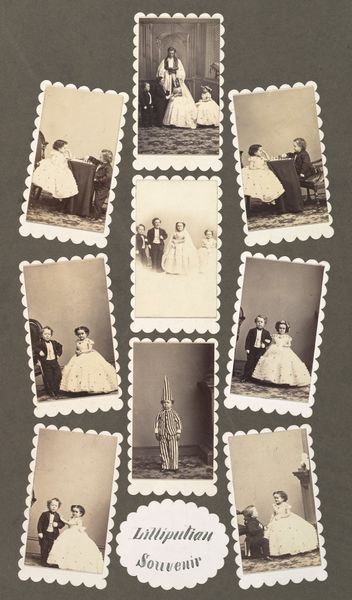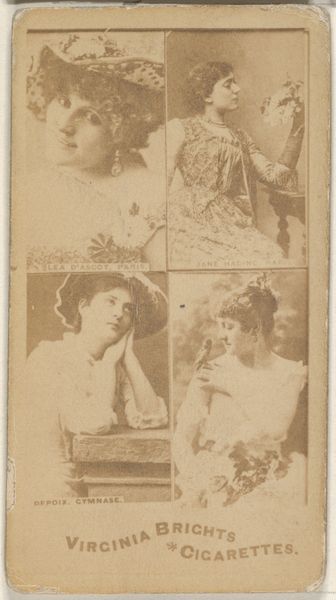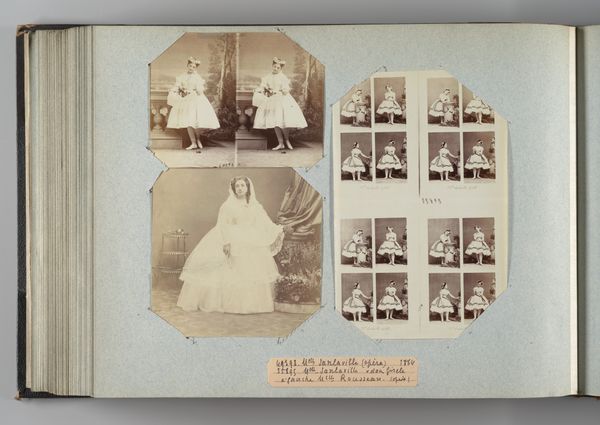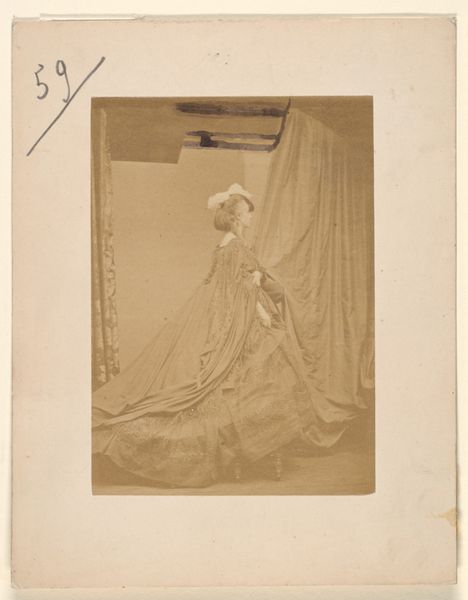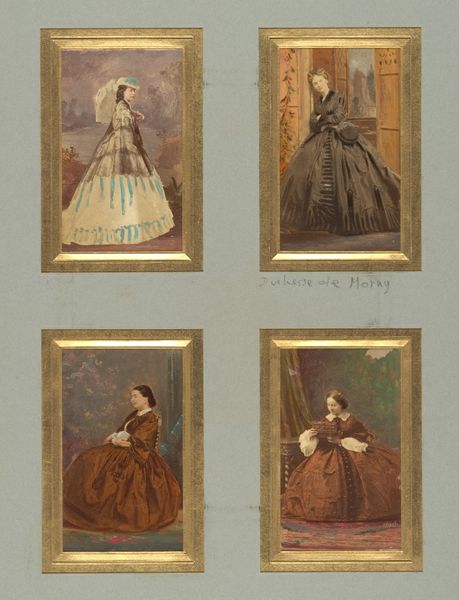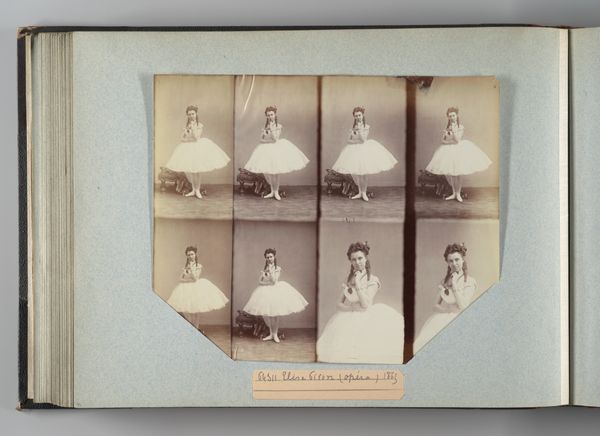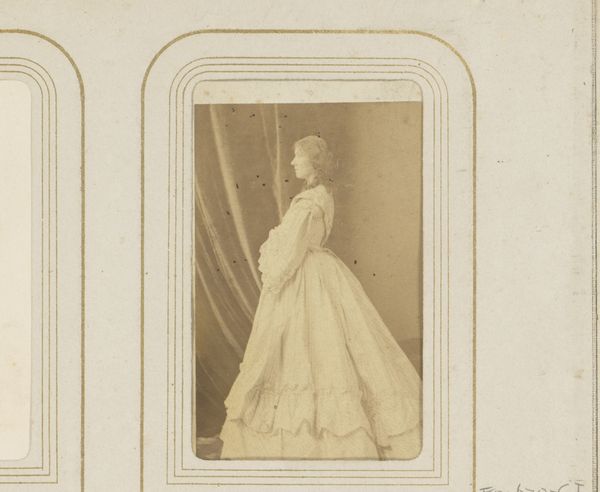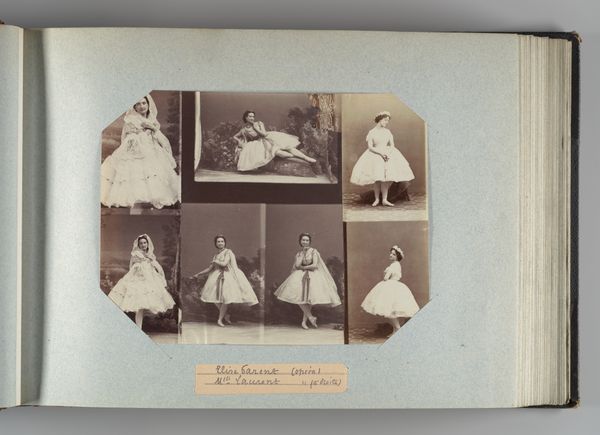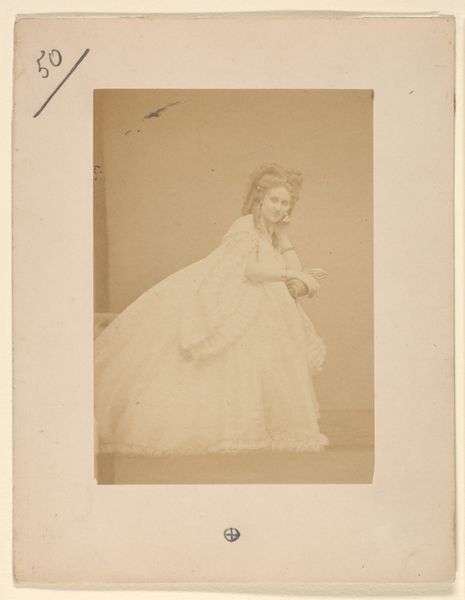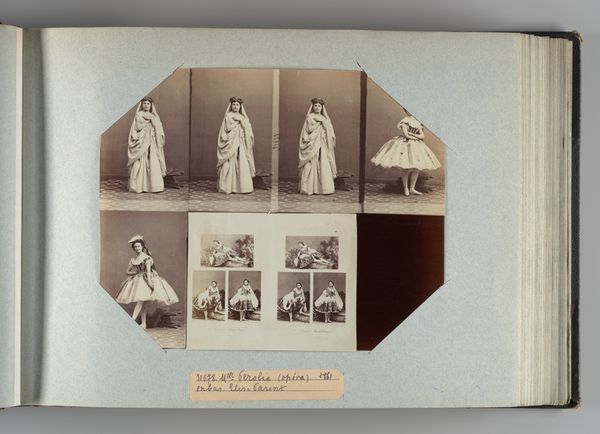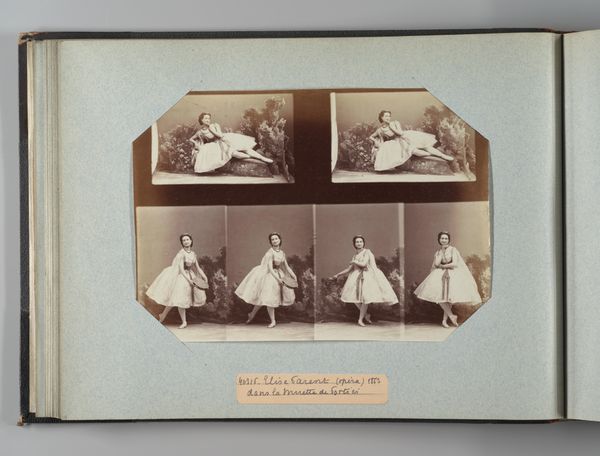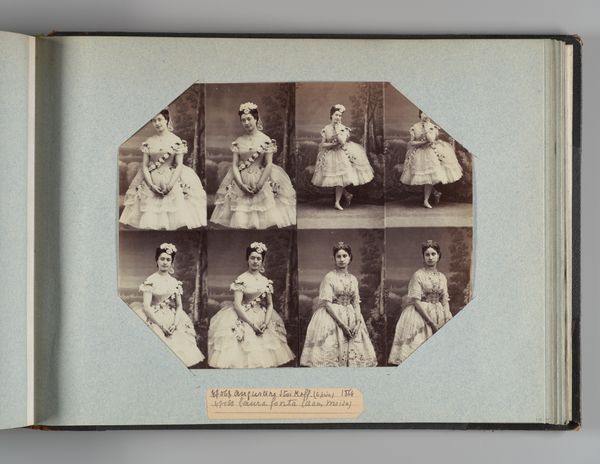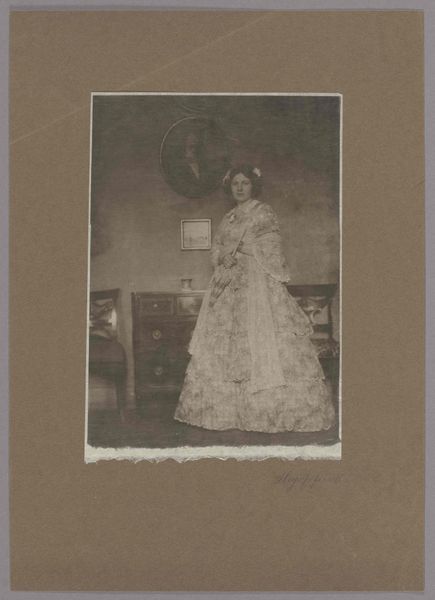
Blad afkomstig uit een fotoalbum, met 7 foto's (ongemonteerde carte-de-visites) en met inkt aangebrachte randversieringen c. 1865 - 1870
0:00
0:00
#
aged paper
#
toned paper
#
pastel soft colours
#
muted colour palette
#
collage layering style
#
retro 'vintage design
#
feminine colour palette
#
watercolour illustration
#
soft colour palette
#
watercolor
Dimensions: height 288 mm, width 230 mm
Copyright: Rijks Museum: Open Domain
Curator: This is a page from a photo album dating back to 1865-1870, showcasing a series of carte-de-visite photographs and inky embellishments. It gives you a fascinating glimpse into Victorian-era portraiture and practices around image consumption and display. Editor: I'm immediately drawn to the handmade aspect of it. The ink drawings around the photographs feel very personal, like someone carefully crafted this album page. What strikes you about this piece? Curator: The album page really collapses the hierarchy between artistic labor and reproductive technology. Photography, a relatively new industrial process at the time, meets the handmade through the inking and mounting. This isn’t just about passively consuming images; it is about actively producing meaning through how images are consumed and arranged. Think about the material value invested here - the photographs, the ink, the album itself, and the labor required for assembly. How does this handwork change your understanding of Victorian photography? Editor: It makes me consider who created the album. Was it the same woman appearing in the photos, making a statement about herself and her circle? The decorative choices make it feel so intimate, so feminine. Curator: Exactly. What if it were collaborative labour? Perhaps the photos were bought, then family or household hands contributed to its aesthetic arrangement. So, consider the wider material context: photographic studios popping up to meet demand, the printing processes to quickly develop photos and make many copies. How did industrial practices influence the family album? Editor: That’s fascinating – framing it as collaborative labour disrupts the idea of a single artist, emphasizing instead how cultural meaning is built collectively. Curator: Precisely! By examining the materials and processes, we reveal the social relationships embedded within. It’s more than just snapshots of wealthy ladies; it’s evidence of Victorian image culture in action. Editor: This really highlights the importance of considering the making and using, not just the viewing of photographs. Thanks! Curator: My pleasure. Keep in mind: thinking through materials lets us see labor relations in surprising places.
Comments
No comments
Be the first to comment and join the conversation on the ultimate creative platform.
